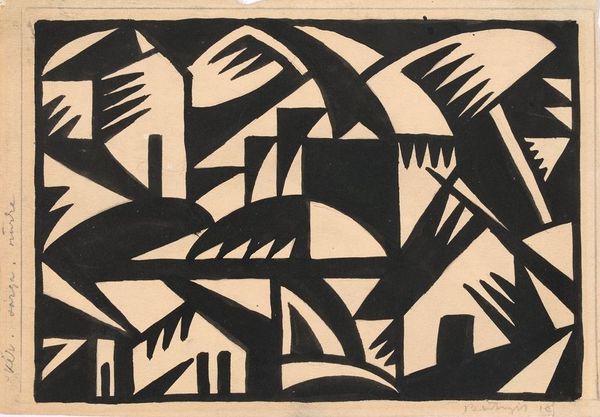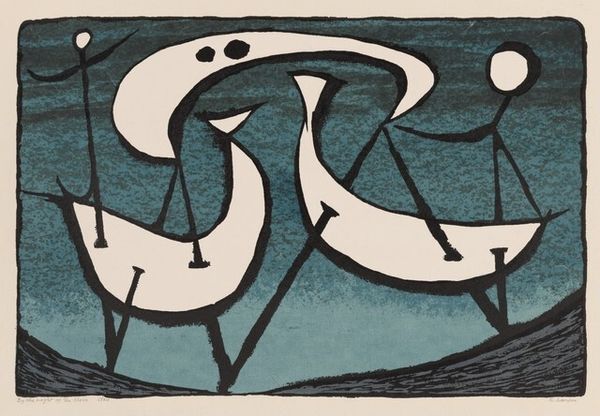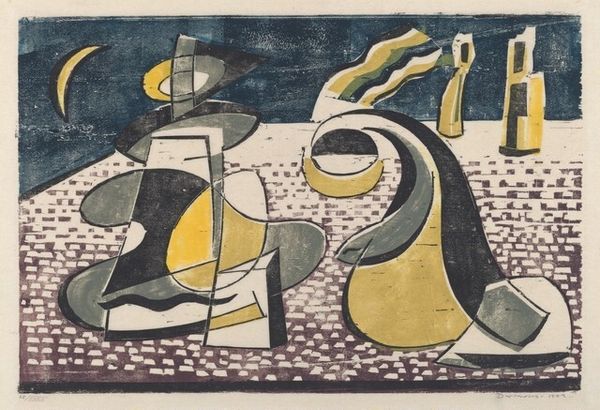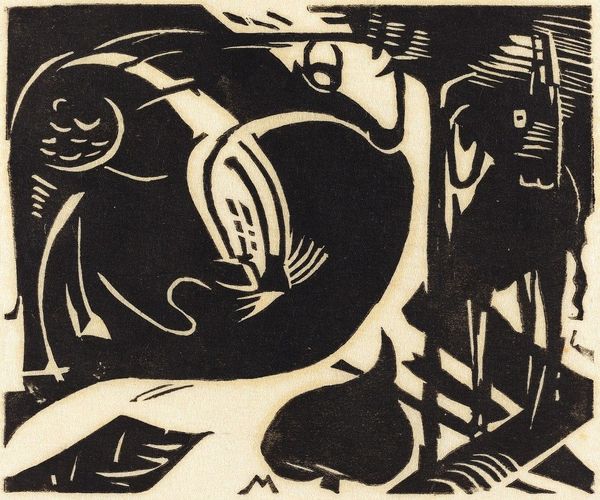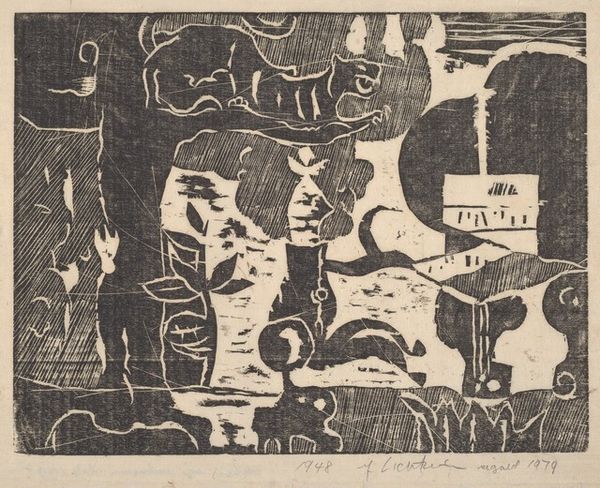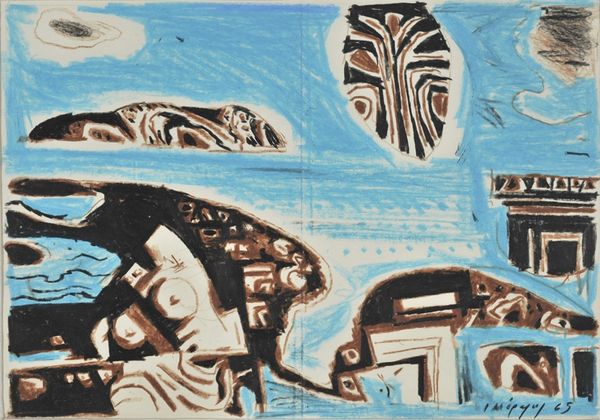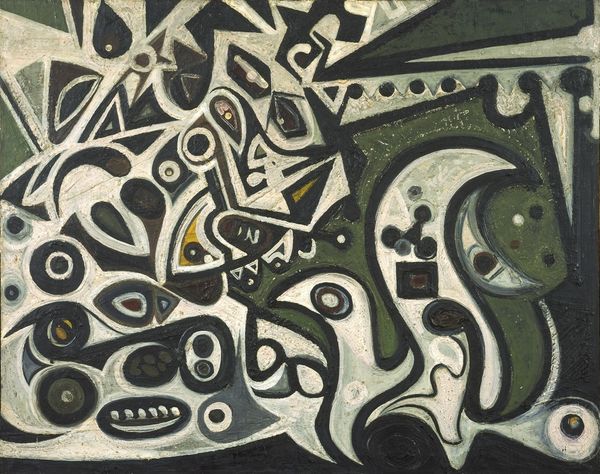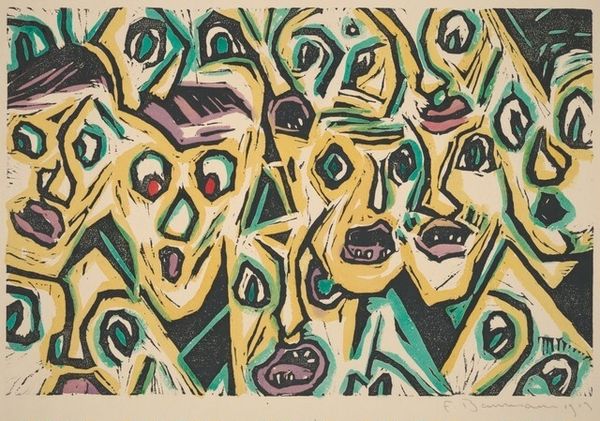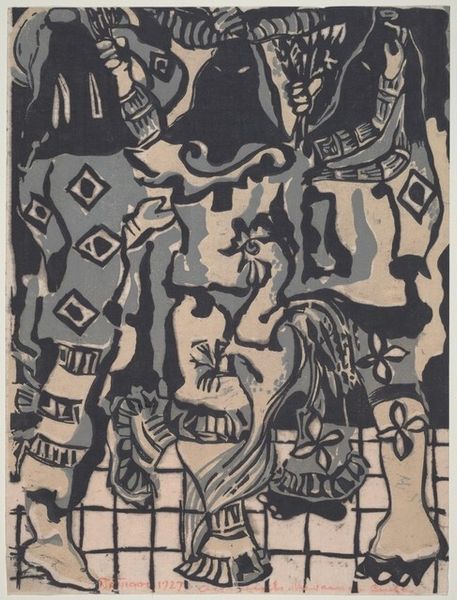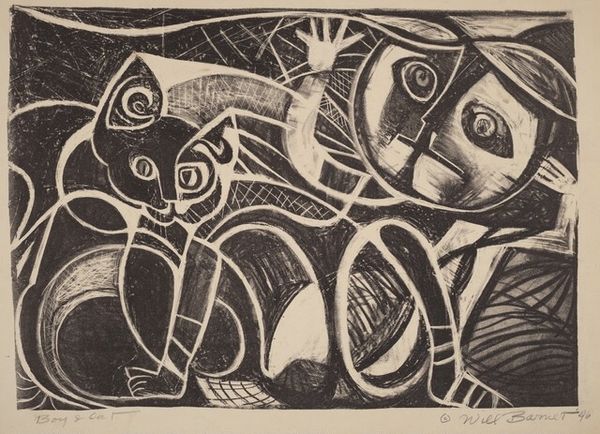
Dimensions: overall: 30.5 x 45.2 cm (12 x 17 13/16 in.)
Copyright: National Gallery of Art: CC0 1.0
Curator: Looking at Werner Drewes' 1944 woodcut, "Inner Tropical Seas," it's hard to miss the echoes of German Expressionism despite its abstract form. Drewes emigrated to the US during the rise of Nazism, a theme we'll explore. Editor: Right! It's got a groovy kind of rhythm—swirls of blue, black and white against a muted green and blue background. Makes me think of exotic fruit, y’know, all stylized. Not exactly representational, but…vibey? Curator: It's more than vibes, though, isn’t it? These aren’t just colors; they are symbolic. We see, through his abstracted tropical iconography, a response to displacement. The internment of Japanese Americans during WWII profoundly impacted his circle. We need to frame this period correctly to understand its socio-political echoes. Editor: Okay, I dig that – like he’s channeling that energy? Sort of twisting it into a…well, inner landscape as he’s calling it. Is he seeing the ocean, the palm trees in his head or is he reinventing that imagery? Curator: That reinvention, or perhaps reimagining, is the crux of the piece. Think about how Drewes, forced from his homeland and separated from his cultural roots, channels these feelings into new shapes. These are the anxieties of the exile manifested abstractly. It's about constructing a sense of place under duress. Editor: Whoa. I was all caught up in the colors! The way they dance and curve makes it almost playful. I did not imagine Drewes was processing trauma like that – and channeling some bold existential stuff! Curator: Art is so powerful in that it allows this ambiguity! The bright, almost jaunty blue deceives us because of this moment in history where identities and belonging are fiercely questioned. A woodcut created while in exile gives form to internal upheaval. Editor: Wow. Okay, so beyond those “vibes” I felt…there’s this depth that shifts how I see it all. Thanks. Curator: It's precisely this shift in perspective, considering context along with form, which makes interpreting Drewes so incredibly relevant for understanding broader themes of identity in exile. Editor: Okay I’m gonna go back and stand in front of it for like, another hour now! It's like those colors now hold a story instead of just feeling bright. Cool.
Comments
No comments
Be the first to comment and join the conversation on the ultimate creative platform.

